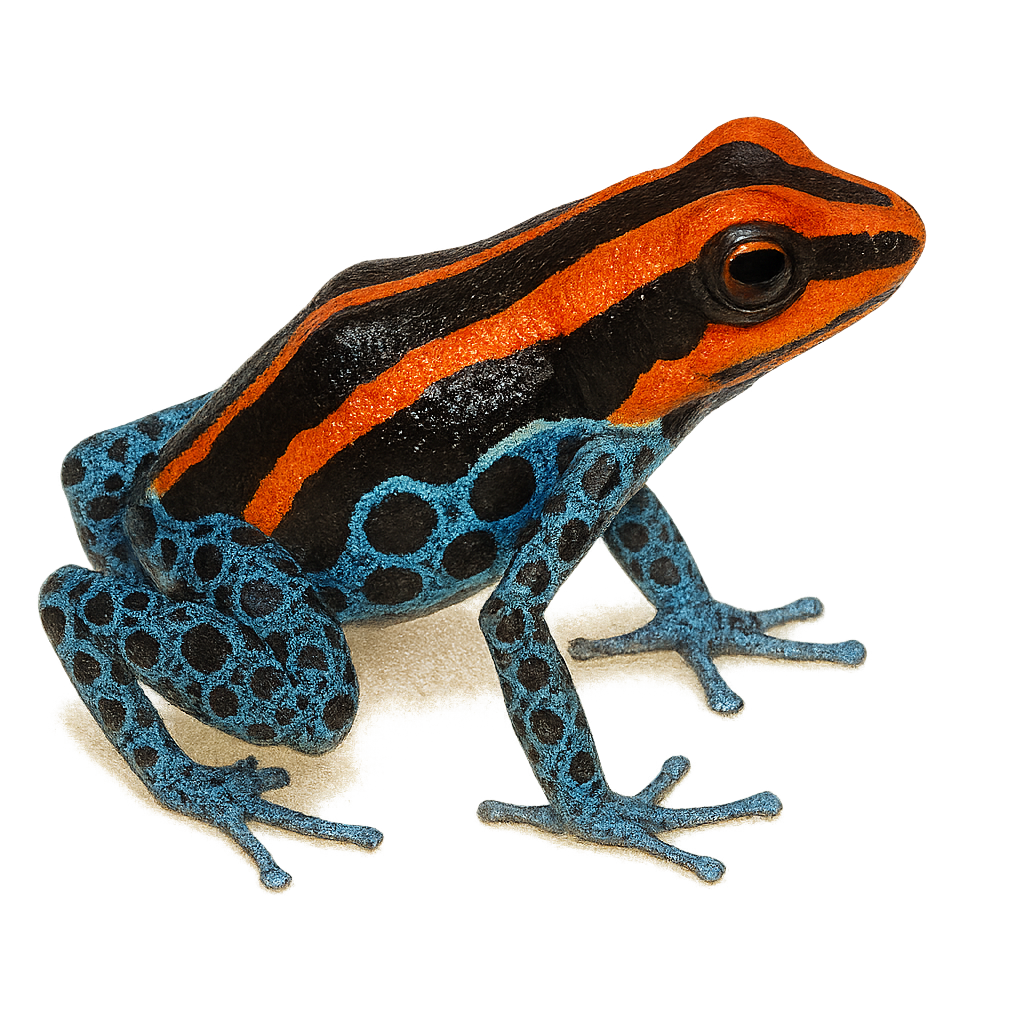Your wildlife photography guide.
Explore the blessed poison frog in detail, study its behavior, prepare your shots.
Where to observe and photograph the blessed poison frog in the wild
Learn where and when to spot the blessed poison frog in the wild, how to identify the species based on distinctive features, and what natural environments it inhabits. The WildlifePhotographer app offers tailored photography tips that reflect the blessed poison frog’s behavior, helping you capture better wildlife images. Explore the full species profile for key information including description, habitat, active periods, and approach techniques.
Blessed Poison Frog
Scientific name: Ranitomeya benedicta

IUCN Status: Near Threatened
Family: DENDROBATIDAE
Group: Amphibians
Sensitivity to human approach: Suspicious
Minimum approach distance: 2 m
Reproduction period: November to March
Incubation: 12–14 jours
Births: December to April
Habitat:
humid rainforests, dense undergrowth
Activity period :
Primarily active during the day, with peak activity in the morning and late afternoon.
Identification and description:
Ranitomeya benedicta is a small, brightly colored frog native to the humid rainforests of Peru. Known for its vivid colors, ranging from blue to black with yellow or orange patterns, it serves as a warning to potential predators of its toxicity. This species primarily inhabits dense, moist undergrowth, where it feeds on small insects. It is diurnal and spends most of its time foraging or hiding among leaves. Reproduction typically occurs during the rainy season when conditions are optimal for tadpole development. Eggs are laid in moist locations, and tadpoles are transported by parents to water bodies.
Recommended lens:
Macro – adjust based on distance, desired framing (portrait or habitat), and approach conditions.
Photography tips:
To photograph Ranitomeya benedicta, it's essential to approach slowly to avoid scaring it. Use a macro lens to capture the details of its colorful patterns. Natural light is ideal, but a diffused flash can be used to brighten shaded areas. Be patient and wait for the frog to move naturally for dynamic shots. Avoid touching or disturbing the animal, as this could stress it and affect its natural behavior.
From knowledge to field practice
A species profile helps you understand an animal. In the field, the challenge is often different. Remembering your own observations.
The WildlifePhotographer app allows you to:
• record your personal observations
• note locations, dates, and behaviors
• revisit your field references over time
• build a private and long-term field logbook
The app does not provide observation locations.
It helps you organize what you actually observe, with respect for wildlife.

